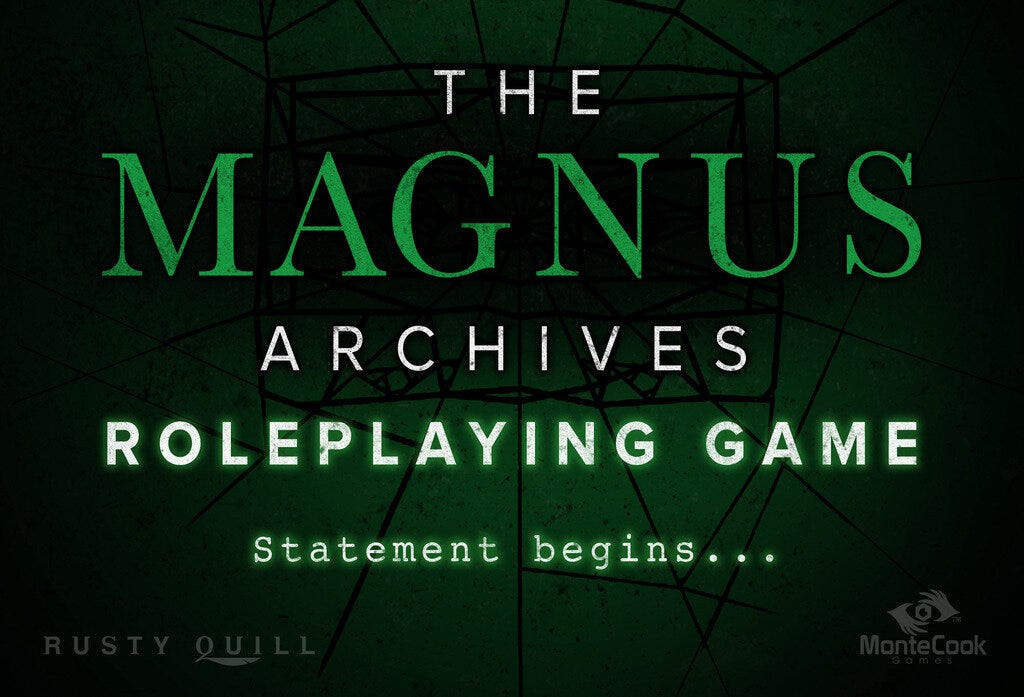A few entries back, I said that when you start to design a new game, you start with the heart—and the heart of an RPG is, “What do the characters do?”
Then, we examined the various aspects of task resolution and determining success and failure in three different essays. (Hey, in my defense, task resolution is important!)
Let’s get back to that heart. What do characters do? The implication of the question, of course, is that characters do something. So, if the concept of the game that we’re designing is that we’re someone else doing things, let’s hope those things are interesting and challenging. Seems obvious enough, I hope.
But what does that look like? In other words, what is interesting and challenging? The core concept of the game has to include interesting challenges. Moreover, it has to suggest goals for the characters. And goals inform character creation, character advancement, and narrative satisfaction. Let’s take a look at the hearts of three different games:
1. Go into dungeons, kill the monsters that live there, and take their treasures.
2. Investigate eldritch horrors and (temporarily) stop their machinations.
3. Explore the ruins of the past, discover the seemingly magical wonders within, and use them to improve the future.
Now, each of these games offer a lot more to do than these simplified statements, but we’re drilling down to the core here. And even simplified, these statements imply interesting challenges and goals.
1. Dungeons and monsters are implied to be interesting challenges, and treasure is a decent goal.
2. Eldritch horrors sound like very interesting challenges, and stopping them is a noble goal.
3. Ancient ruins very likely offer interesting challenges, and using wonders to improve the future sounds like a compelling and worthwhile goal.
These concepts are foundational to the entire game, from character creation to the final die roll of the very last session.
(Some might think that giving players something to do is a GM’s job, not the game designer’s job. But that’s just a dodge of the real issue, because it’s the designer’s job to empower the GM with ideas.)
I know you’re anxious to jump into designing the game’s minutiae at the beginning. You’ve got some great new dice mechanics, or you want to lay out the abilities and special powers a starting character can choose from, because that’s what people are going to write about in reviews. That’s what will make someone looking at your game say, “Ooh, cool!” And those mechanics are important.
But the kinds of things I’m talking about are what will make the game something that GMs and players will want to keep going back to long after the newness of your action economy or character advancement innovations has worn off.
Game designers can fall into the trap of thinking too small. They focus on the proverbial trees and not the forest. To put this a different way, they think too much about actions and not about intentions.
In this instance, actions are the specific mechanics of how characters interact with the world. How much can a character do in a round? (And what even is a round?) How far can a character jump? What does it take to hack into the evil corporation’s computer system? How much damage do the spaceship’s guns inflict? These are questions about actions.
Intentions tie into the narrative, not the mechanics. “I want to stop the hobgoblins from attacking the innocent people in the temple” is an intention. “I want to be the ruler of this kingdom” is an intention. “I want to bring down the wizard that has destroyed this forest with hellfire” is an intention.
Actions are a part of the intention, sure. Each intention very likely involves a number of actions—maybe a number of sessions’ worth of actions. But when you’re sitting around the table, you’re thinking about intentions first. When you’re on the bus going home after the game you’re thinking about intentions. Unless you’re very rules-focused or it’s a remarkable situation (like rolling that natural 20 in the clutch situation), it’s going to be intentions that you remember long after the entire campaign is over.
Actions, in this sense, are just the way that the game allows players to carry out their intentions. Actions are not the heart of the game, intentions are. It’s our intent to go down into the dungeon, kill some monsters, and take their treasure. Those aren’t actions. In fact, not one of the aspects of our three game heart statements from earlier describe actions. They don’t describe mechanics. There is no roll to go down into the dungeon mechanic. Even kill monsters isn’t an action. Attack a foe is an action. Kill monsters is an intention.
I know I’m likely beating this point to death, but it’s an important one. Designers focusing too much on the minutiae, particularly at first, struggle to make appealing games with lasting potential.
Every game experience can be reduced to, “Player wants to do X, and Y prevents them,” where X is the goal or intention, and Y is the interesting challenge. That’s what players are going to care about, that’s what GMs are going to design adventures around, and that’s what’s going to make a whole session or campaign.
Hey, while I’ve got your attention, if you might be interested in learning more about the game I’m designing right now, The Magnus Archives Roleplaying Game, click here to be alerted when the crowdfunding campaign launches. There will be a great deal of information about the game to share then





Again such a lovely write up, thank you! Do you know of any exercises that challenge you to state the intentions of the game a clear and as enging as possible?
Great article about Intentions - not Actions or Mechanics - being the real heart of a game. Thanks Monte! ⚔